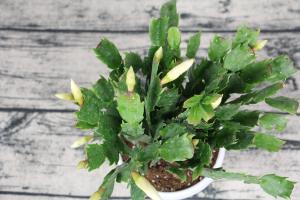Why Can't You Plant Tomatoes in the Same Spot?
Tomatoes are one of the most popular vegetables grown in home gardens across the world. They are easy to grow, highly productive, and provide an abundance of fresh, juicy fruit throughout the growing season. However, one common mistake that many gardeners make is planting tomatoes in the same spot year after year. In this article, we will explore why this is a bad idea and what you can do to keep your tomato plants healthy and productive.
The Problem with Replanting Tomatoes in the Same Spot
The first reason why replanting tomatoes in the same spot is a bad idea is that it can lead to soil-borne diseases. Tomatoes are susceptible to a range of fungal and bacterial diseases that can live in the soil for many years. When you plant tomatoes in the same spot year after year, these diseases can build up and infect your plants. Some common soil-borne diseases that affect tomatoes include early blight, late blight, fusarium wilt, and verticillium wilt.
The second reason why replanting tomatoes in the same spot is a bad idea is that it can lead to nutrient depletion. Tomatoes are heavy feeders and require a lot of nutrients, especially nitrogen, phosphorus, and potassium, to grow and produce fruit. When you plant tomatoes in the same spot year after year, they can deplete these nutrients from the soil, making it harder for future crops to grow and produce healthy fruit. This can result in smaller yields or even a complete failure to produce fruit.
How to Avoid Replanting Tomatoes in the Same Spot
To avoid the problems associated with replanting tomatoes in the same spot year after year, there are several things you can do. The first and most important thing is to rotate your crops. This means planting tomatoes in a different spot in your garden each year, preferably a spot that has not had tomatoes or other members of the nightshade family, such as peppers or eggplant, for at least two years. This will help prevent soil-borne diseases and nutrient depletion.
Another thing you can do to avoid replanting tomatoes in the same spot is to use a cover crop. A cover crop is a plant that you grow specifically to improve the soil. Some good cover crops for tomatoes include clover, buckwheat, and rye. These crops help add nutrients to the soil, improve soil structure, and suppress weeds. After the cover crop has grown, you can till it into the soil to add organic matter and improve soil fertility.
In Conclusion
In conclusion, planting tomatoes in the same spot year after year is a bad idea for several reasons. It can lead to soil-borne diseases, nutrient depletion, and poor yields. To avoid these problems, it is important to rotate your crops and use a cover crop. By following these simple steps, you can keep your tomato plants healthy and productive year after year.

 how many times do yo...
how many times do yo... how many planted tre...
how many planted tre... how many pine trees ...
how many pine trees ... how many pecan trees...
how many pecan trees... how many plants comp...
how many plants comp... how many plants can ...
how many plants can ... how many plants and ...
how many plants and ... how many pepper plan...
how many pepper plan...






























